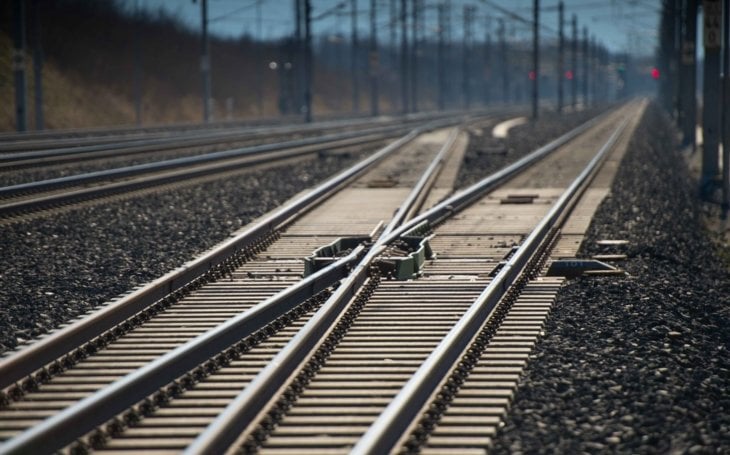railway-international.com
31
'24
Written on Modified on
European rail CEOs outline long-term vision & key priorities for sector
Europe's leading rail CEOs gathered today for the Management Committee and 73rd General Assembly of the Community of European Railway and Infrastructure Companies (CER), to discuss the ambitious work programme for 2024 and beyond.

The CER membership unanimously approved the CER 2024-29 Manifesto entitled "On Track For Europe" which sets out the European Rail Sector's vision for well-functioning rail passenger and freight services, as well as a high-capacity rail infrastructure, with the objective of pursuing the modal shift and modal share objectives of the EU Strategy for Smart and Sustainable Mobility and fostering Europe's green and digital transitions.
In this key document CER invites EU policymakers to consider railways at the centre of all policy tools designed to promote Europe's sustainability and prosperity, underlining the following crucial advantages:
Railways are by far the most sustainable mode of transport;
Railways energy efficiency will help decrease Europe energy consumption, increase Europe's share of renewable energy sources, and increase Europe's independence from non-EU energy sources;
Railways are efficient investors and contribute to the creation of sustainable economic ecosystems.
As such, all future policy actions must be based on four essential and fundamental pillars:
Ensuring fair competition between modes
Ensuring adequate financing of railways
Digitalising rail services and ensuring the deployment of rail's key enablers: European Rail Traffic Management System (ERTMS) (and FRMCS), Digital Automatic Coupling (DAC), Digital Capacity Management (DCM)
Adopting a new approach to market and competition policies
The assembly also approved two important position papers, on European ERTMS Governance, and Multimodal Passenger Rights.
The European Rail Traffic Management System (ERTMS) is a key enabler to improve cross-border operations by providing a single European command, control and signalling system, ensuring transport reliability, increasing capacity, and improving safety levels. The concrete benefits are different country by country. ERTMS trackside and onboard deployment is progressing much more slowly than expected. Single national ERTMS implementations are developing at a different pace, undermining the benefits of a systemic Europe-wide ERTMS deployment.
The CER Position Paper on European ERTMS Governance (accessible here), highlights that synchronised and harmonised trackside and onboard ERTMS deployment is vital to achieve the modal shift targets envisaged in the Green Deal, under the precondition of having suitable funding and financing options in place. Today ERTMS governance is spread along several different bodies (EU ERTMS Coordinator, CINEA, EU Agency for Railways, Europe's Rail JU), each one responsible for a single component of the value-chain. This generates a clear need for an integrated approach, in order to improve consistency between objectives and fundings. CER believes that ERTMS deployment needs to be boosted and to this purpose a future centralised EU-Level ERTMS governance and Program Management could help with regulating funding, coordination of National Implementation Plans (NIP), resourcing, market uptake, migration, and transition.
With the CER Position Paper on passenger rights in the context of multimodal journeys (accessible here), CER considers the protection of customers first and foremost as the sector's own long-standing commitment. CER members know that passenger experience is the decisive factor when customers pick their transport mode. The railway sector is committed to the adopted Regulation (EC) 2021/782 on rail passenger rights and obligations and appreciates the need for a passenger rights framework in a multimodal context, so every entity in the chain understands their rights and obligations to best serve the needs of their passengers.
However, a clear delineation of obligations and responsibilities for all stakeholders is essential to establish a framework that facilitates and encourages multimodality while ensuring adequate protection for passengers. It is also important to consider that without proper infrastructure, functioning multimodality is not possible.
CER Chair Andreas Matthä, CEO ÖBB Holding-AG, said: "The European rail sector supports the European Green Deal and looks forward to boosting the railway system into the digital age with a joint effort in the next term. Europe needs more rail, but rail also needs more Europe. Rail infrastructure investments in Europe require an integrated approach to planning and financing. It must be ensured that standards do not drift apart between financially stronger and financially weaker member states. Therefore, the rail sector needs long-term financial commitments from politicians, including an increase of CEF funds."
CER Executive Director Alberto Mazzola said: "After almost two centuries of existence, European railways remain a future-oriented transport solution, strategically placed to help the EU deliver on its economic, social and environmental promises. In the CER Manifesto, railways commit to provide for the new generations of Europeans: better passenger services for all, including high-speed connections between capitals and major cities; digital rail freight logistics integrated with other modes, leading to zero-emission European logistics; a reliable, safe, high-speed infrastructure and at the same time improvement of the existing network by modernisation and digitalisation. We call on the EU and Member States for a sustainable investment policy to continue prioritising and supporting rail".
www.cer.be

